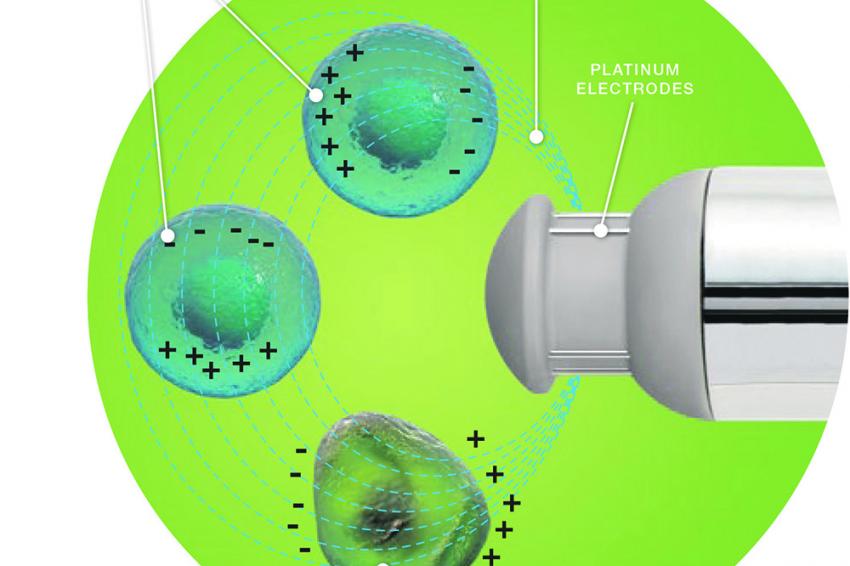The Importance of On-line Process Control
On-line Sensors Facilitate Production and Help to Ensure Quality by Design
Modern therapies of different diseases very often utilize drugs derived from living cells. However, manufacturing of these biopharmaceutical products is a complex process. One of the biggest challenges in biopharmaceutical production is to ensure reproducibility of the actual product. This challenge is rooted in the heterogeneity of a typical bioprocess. Minimal variations of the process conditions may lead to different yields or quality of a product — and might ultimately jeopardize the effectiveness of the drug.
Therefore, it is crucial to control the production process in the best possible way using quality by design. The Process Analytical Technology (PAT) Initiative, which originates from the 2004 guidance published by the US Food & Drugs Administration (FDA), established a regulatory framework that focuses on enhancing the understanding and control of the manufacturing process.
It is common sense that to properly apply PAT, it is essential to move from the manual sampling and laboratory measurement procedures to automated control. As even minimal variations of process parameters have a major influence on the final product, controlling them on-line (or in-situ) in real-time minimizes the risk of lower yield and purity. Real-time monitoring is possible with sensors that withstand the cleaning-in-place (CIP) and sterilization-in-place (SIP) procedures required to minimize the risk of contamination. In most manufacturing sites, this is already common for the fundamental critical process parameters such as pH, dissolved oxygen (DO) and conductivity.
“In fact, many parameters can be monitored continuously in real-time, but those directly related to cell physiology — one of the key performance indicators — are typically still time-consuming off-line measurements that provide only a reactionary window into the past”, says Giovanni Campolongo, market segment manager Upstream at Hamilton Bonaduz.
“Even worse, important process events may be missed if a snapshot of the actual state is only taken sporadically, sometimes only every 24 hours. This significantly reduces the possibility that the cell growth is monitored in a process-safe way compatible with the PAT principles”.
For this reason, several efforts have been put forth over the years to find technologies suited for accurate and reproducible real-time measurements. Some efforts for real-time cell density measurement are based on the use of molecular spectroscopy, others on soft sensing techniques (e.g. algorithms based on the evolution of the oxygen uptake rate, OUR, and the carbon evolution rate, CER, both requiring multivariate data analysis, MVDA, to generate application specific calibrations which are labor intensive to maintain).
Nowadays, in contrast to these methods, permittivity measurement is the most reliable method of monitoring the viable cell density. The measurement principle is based on capacitance. In an alternating electrical field, viable cells behave like small capacitors. The charge from these small capacitors is measured by the sensor and reported as permittivity (capacitance per area). The measurement is immediately affected by changes in viable cell density and can be used to plan process-specific actions for maximum yield. Permittivity can also be used to detect changes in cell physiology and is the most immediate method for determining the beginning of the cell death phase.
This measurement method is quickly becoming the industry standard because of the robust real-time data. It correlates well to off-line cell counting in the crucial exponential phase without the risk of counting errors.
Hamilton is an established supplier for cell density sensors that use this technology. They measure viable cell density on-line (or in-situ) in real-time, meeting the increasing need for PAT in the biopharmaceutical industry. The measurement is not influenced by changes in the media, microcarriers, dead cells, or debris. “On-line measurement of viable cell density makes it possible to detect process events early and respond in real-time without sampling, which is a huge advantage compared to off-line analytical systems”, says Marlene Frank, product manager Cell Density at Hamilton Bonaduz.
Hamilton has recently launched its next-generation viable cell density sensor with an integrated microtransmitter that amplifies the sensor signal for direct connection to the control system. Sensor configuration occurs via USB or wireless Bluetooth. According to Frank, “this sensor simplifies process control and also reduces maintenance efforts to a minimum.”
Contact
Hamilton Bonaduz AG
Etzelstrasse
8820 Wädenswil
Switzerland





